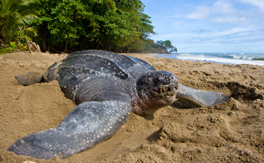Gender-based violence and environment linkages
<p>Around the world, it is estimated that one in three women and girls will experience gender-based violence (GBV) during her lifetime (World Bank, 2019). Rooted in discriminatory gender norms and laws
<p>Around the world, it is estimated that one in three women and girls will experience gender-based violence (GBV) during her lifetime (World Bank, 2019). Rooted in discriminatory gender norms and laws
In 2007, the Fourth Assessment Report of the IPCC authoritatively established that human-induced climate change is accelerating and already has severe impacts on the environment and human lives. Although there is not a mono-causal relation between climate change, disasters, displacement and migration, the existence of a clear link between the phenomena is increasingly recognised.
Opportunities to mitigate climate change by reducing emissions from deforestation and forest degradation (REDD), especially in developing countries, have risen to the top of the international climate policy agenda, attracting increasing attention and investment from environmental organizations, development assistance agencies and the business community.

This IUCN review released in Copenhagen highlights the way climate change is adversely affecting marine, terrestrial and freshwater habitats. Arctic fox, Leatherback turtle, Beluga whale, Salmon and Ringed seal are amongst 10 species "destined to be hardest hit by climate change."
Climate change is now recognized as one of the defining challenges of the 21st century, and protecting health from its impacts is an emerging priority for the public health community. Further, the potential range and magnitude of associated health risks should be central to the rationale for actions to mitigate the occurrence of climate change.
Climate change is now recognized as one of the defining challenges of the 21st century, and protecting health from its impacts is an emerging priority for the public health community. Further, the potential range and magnitude of associated health risks should be central to the rationale for actions to mitigate the occurrence of climate change.
Climate Justice for a Changing Planet: A Primer for Policy Makers and NGOs considers how to move towards a climate justice agenda. It is designed for people engaged in climate change policy-making, whether through governments or non-governmental organizations (NGOs) as well as others interested in better understanding the current discourse.
This book builds on related experience of the IUCN Environmental Law Centre in the areas of Payments for Ecosystem Services (PES), Land Use, Land Use Change and Forestry (LULUCF) under the Clean Development Mechanism (CDM) of the Kyoto Protocol, Access and Benefit-Sharing

This book focuses on impact of environmental/climate change on human migration. Finds that large-scale human movement from climate change and environmental degradation is not only inevitable but is already happening.
This Policy Brief states that developing countries, although facing considerable costs, can also generate new income if they adapt their development strategies to the requirements of climate change mitigation.
Mountains are among the regions most affected by climate change. The implications of climate change will reach far beyond mountain areas, as the contributions in the present publication prepared for the UN Climate Change Conference in Copenhagen in 2009 show. Themes discussed are water, glaciers and permafrost, hazards, biodiversity, food security, and migration.